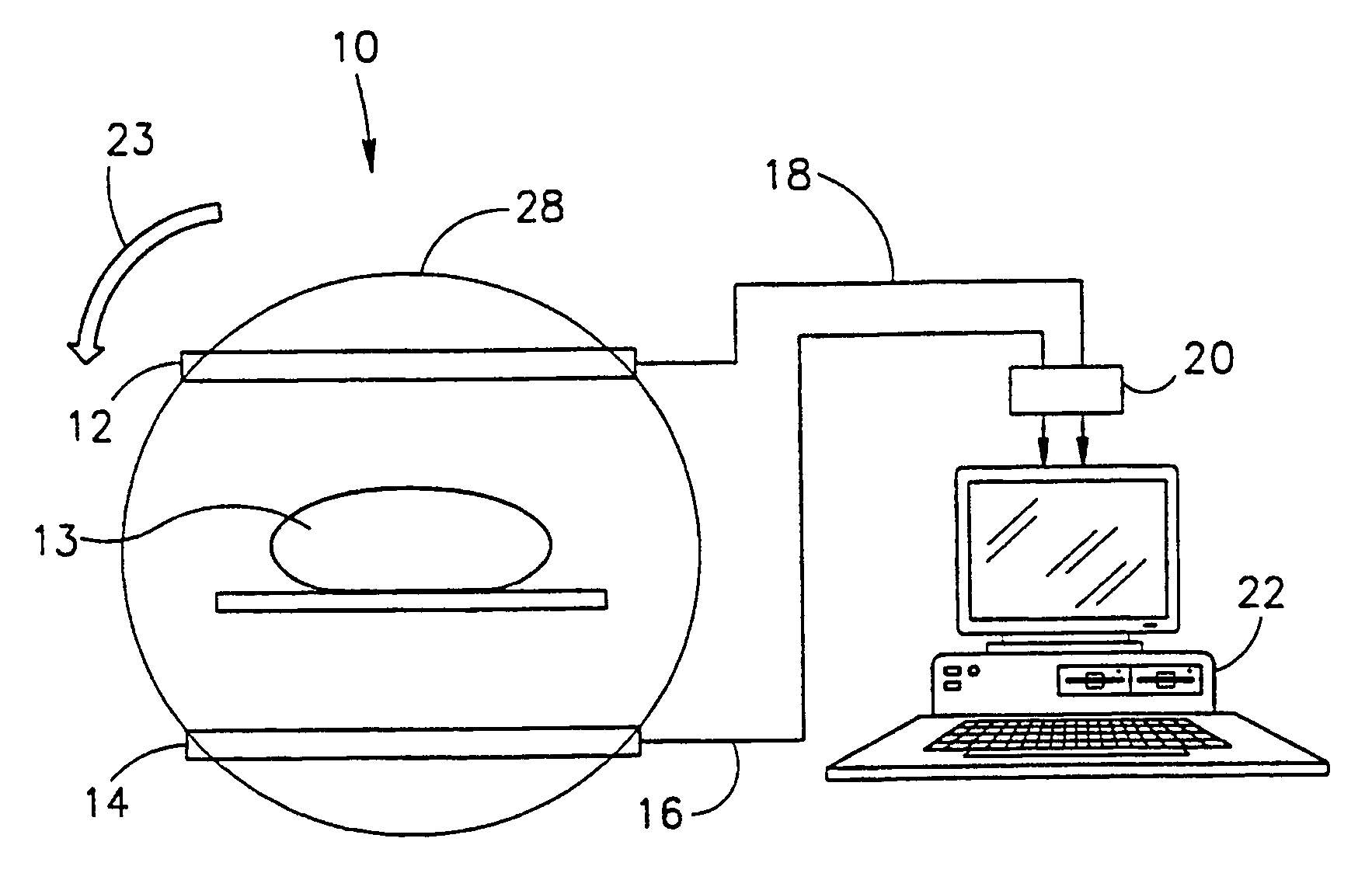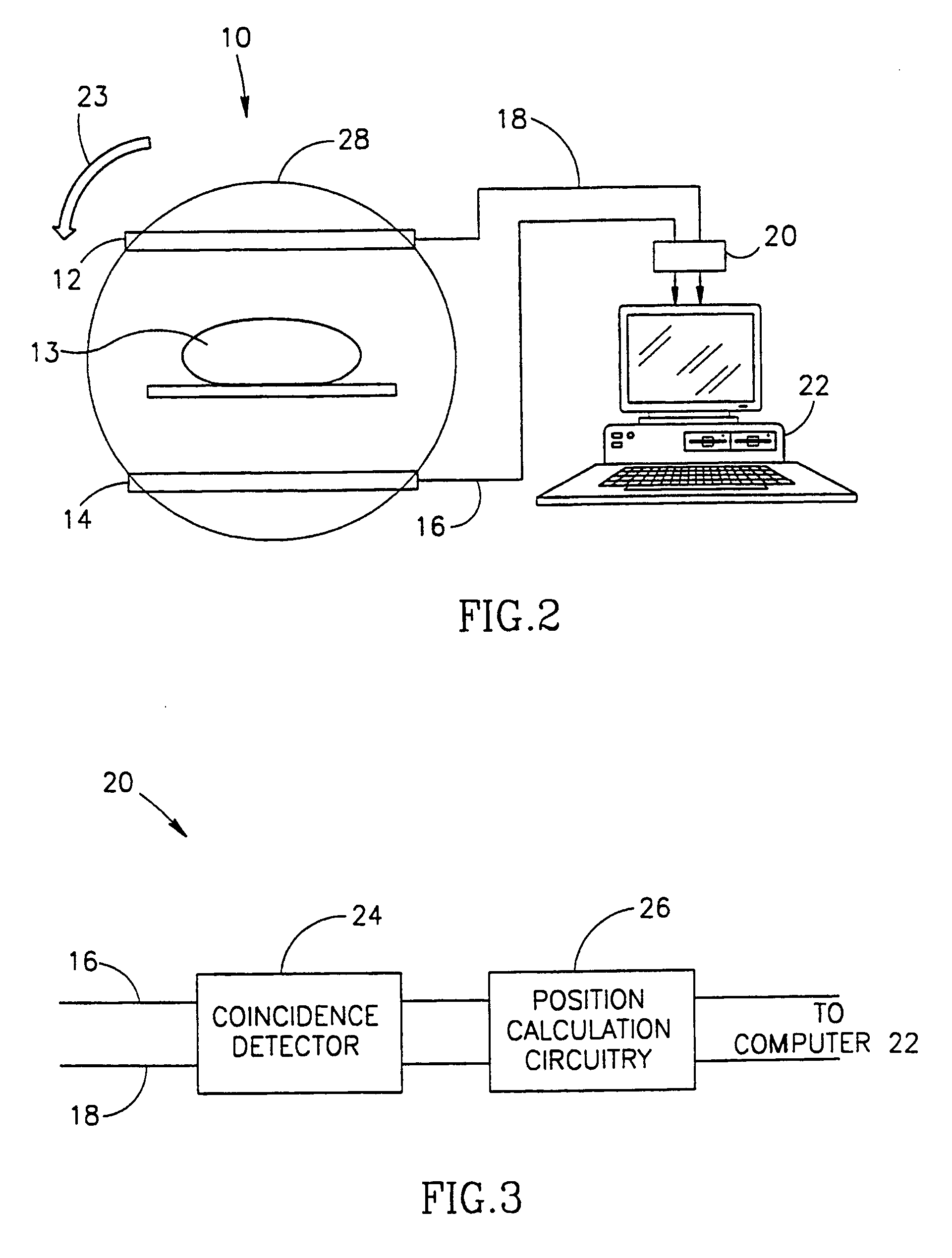Direct tomographic reconstruction
a tomographic reconstruction and reconstruction technology, applied in the field of medical imaging systems and methods, can solve the problems of unsuitable images, large axial blurring, and unsuitable images, and achieve the effects of reducing noise, reducing noise, and small effect on the resolution of final images
- Summary
- Abstract
- Description
- Claims
- Application Information
AI Technical Summary
Benefits of technology
Problems solved by technology
Method used
Image
Examples
Embodiment Construction
[0100]FIGS. 1 and 2 are simplified perspective and cross-sectional representations of a PET imaging and reconstruction system 10 in accordance with a preferred embodiment of the invention.
[0101]PET system 10, in the preferred embodiment shown in FIGS. 1 and 2 comprises a pair of area detectors 12 and 14 placed on opposite sides of a subject 13 who has been previously injected with a material which decays producing a pair of photons which are ejected in opposite directions. Area detectors 12, 14 can be any type of area detectors known in the art. However, in a preferred embodiment of the invention, the area detectors comprise a large scintillator crystal which emits light when a gamma ray photon is absorbed by the crystal. A series of photomultipliers, preferably arranged in a hexagonal configuration are attached to and view the crystal and produce electrical signals which are proportional to the amount of light which reaches the photomultiplier. The position on the crystal at which ...
PUM
 Login to View More
Login to View More Abstract
Description
Claims
Application Information
 Login to View More
Login to View More - R&D
- Intellectual Property
- Life Sciences
- Materials
- Tech Scout
- Unparalleled Data Quality
- Higher Quality Content
- 60% Fewer Hallucinations
Browse by: Latest US Patents, China's latest patents, Technical Efficacy Thesaurus, Application Domain, Technology Topic, Popular Technical Reports.
© 2025 PatSnap. All rights reserved.Legal|Privacy policy|Modern Slavery Act Transparency Statement|Sitemap|About US| Contact US: help@patsnap.com



